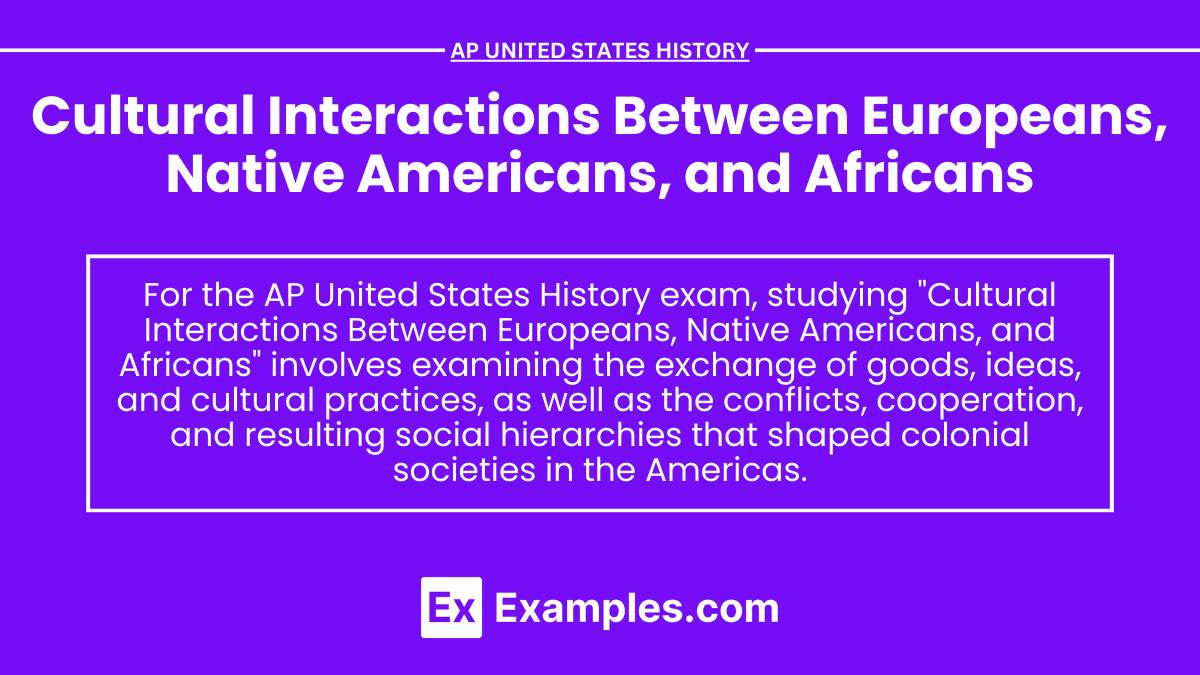In AP United States History, the cultural interactions between Europeans, Native Americans, and Africans during the colonial period are critical to understanding the formation of early American society. These interactions were characterized by a mix of cooperation, conflict, and adaptation, as each group influenced the others through trade, warfare, intermarriage, and the exchange of religious and cultural practices. The blending of these diverse cultures led to the creation of new social identities, traditions, and power dynamics that profoundly shaped the development of the Americas.
Learning Objectives
In studying the cultural interactions between Europeans, Native Americans, and Africans, you will be introduced to the ways in which these groups influenced each other through trade, conflict, and cooperation. The blending of cultures, resulting in new social identities and traditions, will be explored. You will also examine how these interactions led to the formation of complex social hierarchies and power dynamics in the colonies. The lasting impacts of these cultural exchanges on the development of American society will be analyzed.
Cultural Exchange and Adaptation

Religion: The spread of Christianity was a central aspect of European colonization. Missionaries sought to convert Native Americans and Africans, leading to syncretic religions that blended Christian beliefs with indigenous and African spiritual practices.
Language: Europeans introduced their languages (Spanish, English, French, etc.) to the New World, which became dominant in the colonies. However, indigenous and African languages influenced local dialects and created creole languages.
Food and Agriculture: The Columbian Exchange facilitated the introduction of European crops and livestock to the Americas, while Native American agricultural techniques and crops (such as maize, beans, and squash) were adopted by Europeans and Africans. African culinary traditions also contributed to the development of regional cuisines in the Americas.
Conflict and Resistance
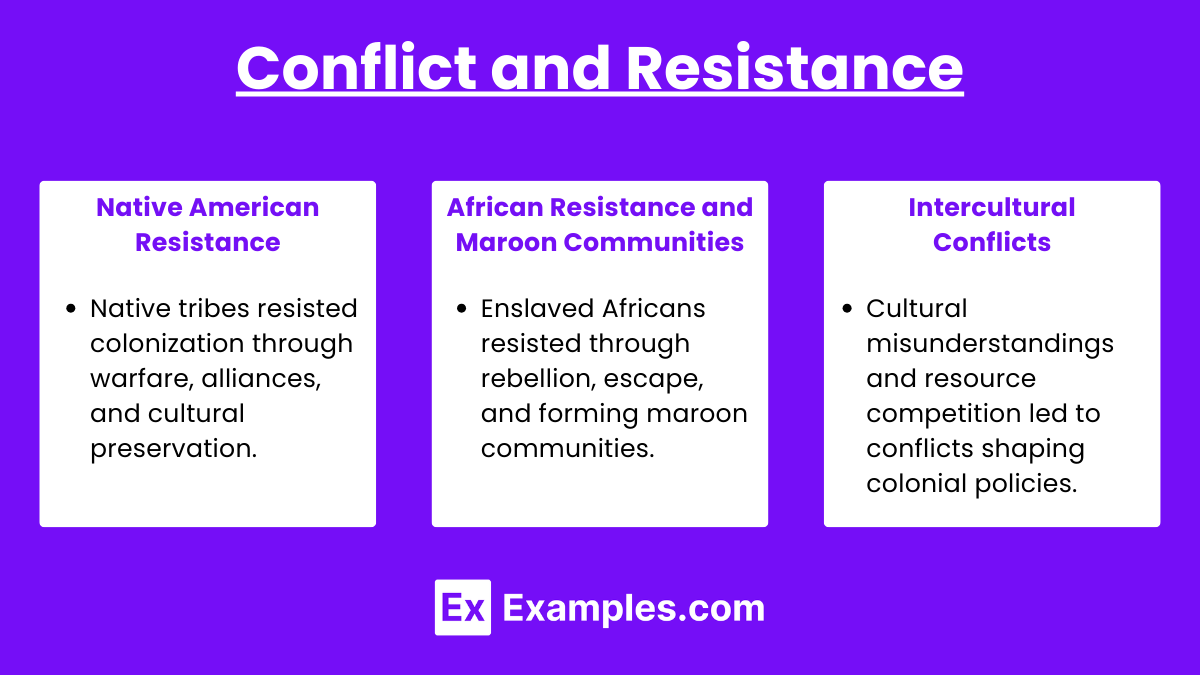
Native American Resistance: Native American tribes resisted European colonization through warfare, strategic alliances, and maintaining their cultural practices. Conflicts like King Philip’s War in New England and the Pueblo Revolt in the Southwest were significant examples of indigenous resistance.
African Resistance and Maroon Communities: Enslaved Africans resisted their conditions through rebellion, escape, and the formation of maroon communities—autonomous settlements of escaped slaves that maintained African cultural traditions and often allied with Native Americans.
Intercultural Conflicts: Cultural misunderstandings and competition for resources often led to conflicts between Europeans, Native Americans, and Africans. These conflicts shaped the development of colonial policies and alliances.
Intermarriage and Mestizaje
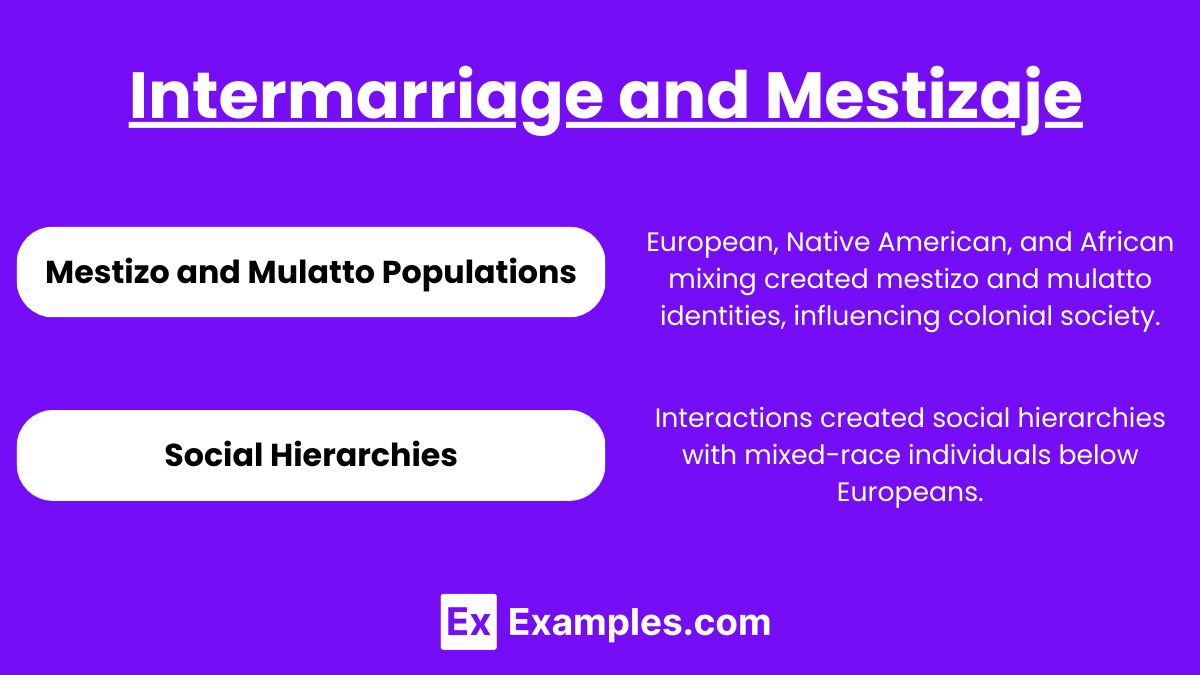
Mestizo and Mulatto Populations: The mixing of European, Native American, and African peoples led to the emergence of new racial and cultural identities, such as mestizos (European and Native American ancestry) and mulattoes (European and African ancestry). These mixed populations played significant roles in colonial society, particularly in Spanish and Portuguese colonies.
Social Hierarchies: The interactions between these groups contributed to the development of complex social hierarchies, where mixed-race individuals often occupied intermediate social positions, though still below Europeans.
Trade and Economic Exchange
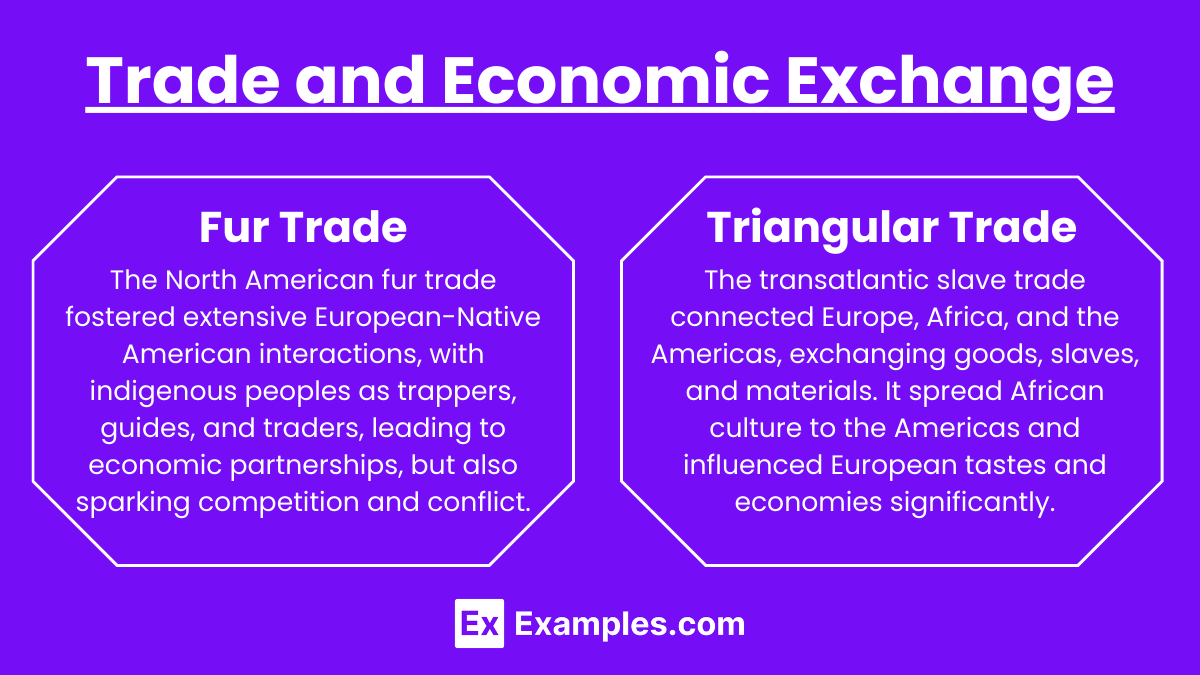
Fur Trade: The fur trade in North America involved extensive interaction between Europeans and Native Americans, with indigenous peoples playing crucial roles as trappers, guides, and traders. This trade led to the establishment of economic partnerships but also to competition and conflict.
Triangular Trade: The transatlantic slave trade connected Europe, Africa, and the Americas in a system of trade that exchanged goods, slaves, and raw materials. This trade had significant cultural impacts, spreading African culture to the Americas and influencing European tastes and economies.
Cultural Syncretism and New Identities
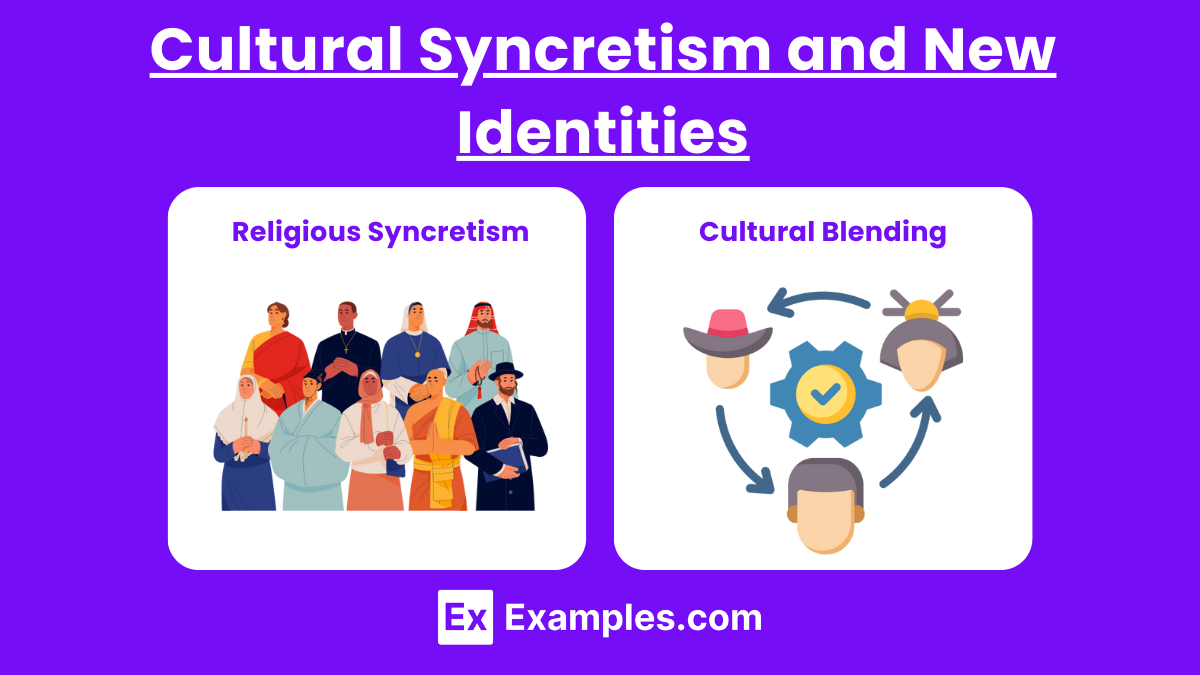
Religious Syncretism: In Spanish America, Catholicism blended with indigenous and African religious practices, resulting in syncretic religions like Santería in the Caribbean and the Virgin of Guadalupe in Mexico.
Cultural Blending: The interactions among these groups led to the creation of new cultural practices, including art, music, and religious rituals that reflected a blending of European, Native American, and African influences. These hybrid cultures were especially prominent in regions with high levels of racial and ethnic mixing, such as the Caribbean and Latin America.
Examples
- The Pueblo Revolt (1680): A successful uprising of Pueblo Native Americans against Spanish colonizers in present-day New Mexico. The revolt was fueled by the Spanish suppression of indigenous religious practices and the imposition of forced labor.
- Maroons in Jamaica: Escaped African slaves in Jamaica formed autonomous communities known as maroons. These communities preserved African cultural practices and resisted British colonial forces, eventually securing treaties that granted them freedom and land.
- Santería in the Caribbean: A syncretic religion that emerged in the Caribbean, particularly in Cuba, blending African religious traditions brought by enslaved Africans with elements of Catholicism introduced by the Spanish.
- The Métis of Canada: A mixed-race group descended from European fur traders and Native American women. The Métis developed a distinct culture that combined European and indigenous traditions, playing a key role in the fur trade and the exploration of the Canadian interior.
- King Philip’s War (1675-1676): A conflict between Native American tribes led by Metacom (King Philip) and English settlers in New England. The war was fueled by tensions over land, resources, and cultural differences, and it resulted in significant losses on both sides.
Multiple Choice Questions (MCQs)
Which of the following best describes the cultural impact of the fur trade in North America?
A. It isolated Native American tribes from European influence.
B. It led to the complete assimilation of Native Americans into European culture.
C. It fostered economic partnerships but also caused competition and conflict between Native Americans and Europeans.
D. It prevented any form of cultural exchange between Native Americans and Europeans.
Answer: C
Explanation: The fur trade created economic partnerships between Native Americans and Europeans, with indigenous peoples playing key roles as trappers and traders. However, it also led to competition for resources and conflicts that shaped colonial policies and relations.
What was a significant outcome of intermarriage between Europeans and Native Americans in the Spanish colonies?
A. The complete integration of Native Americans into European society
B. The emergence of the mestizo population with mixed European and Native American ancestry
C. The elimination of Native American cultures
D. The creation of racially segregated communities
Answer: B
Explanation: Intermarriage between Europeans and Native Americans in the Spanish colonies led to the emergence of the mestizo population, which played a significant role in colonial society and contributed to the blending of cultures.
What was a maroon community?
A. A group of European settlers living in isolation
B. A Native American tribe that assimilated into European culture
C. A community of escaped African slaves who maintained African cultural traditions and resisted colonial forces
D. A European trading post in the New World
Answer: C
Explanation: Maroon communities were formed by escaped African slaves who resisted colonial authorities and maintained their African cultural practices. These communities often allied with Native Americans and played significant roles in resisting European domination.

